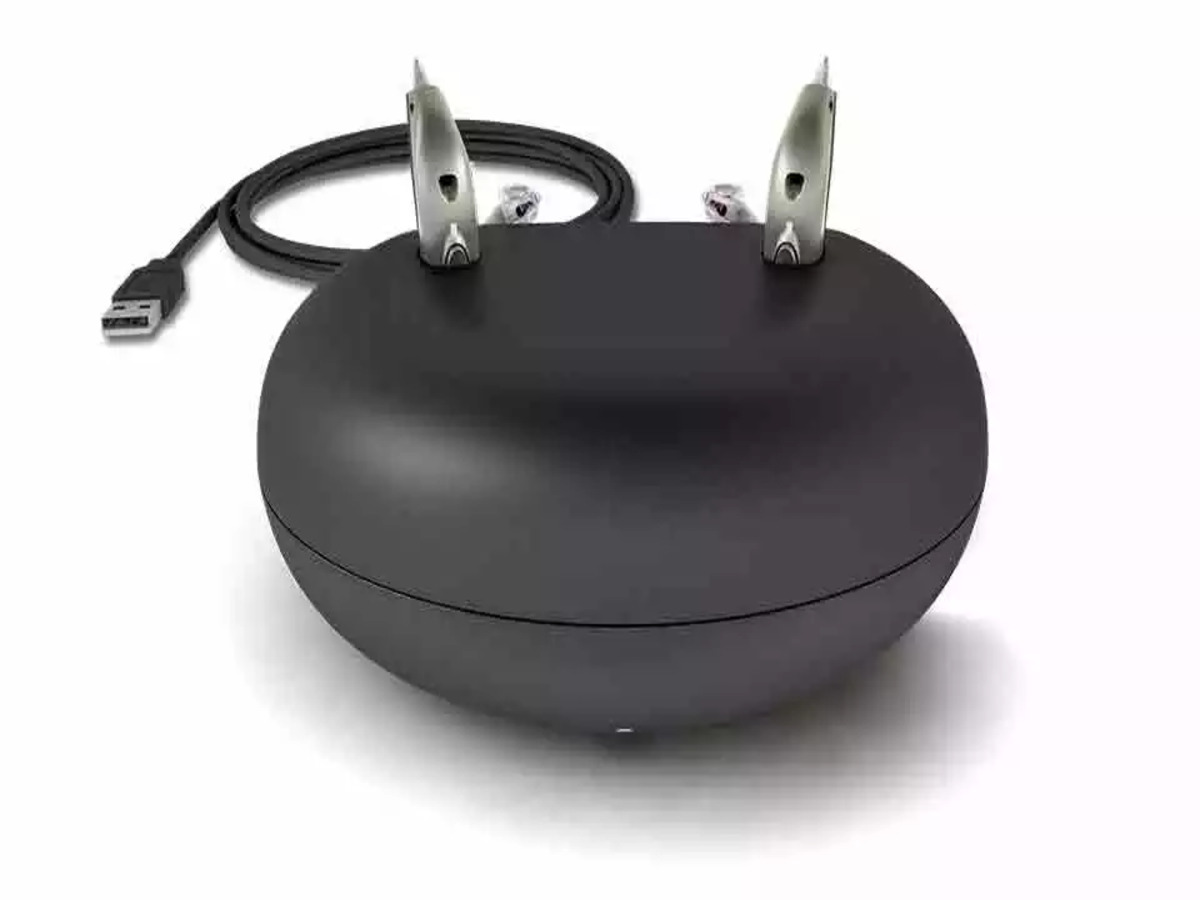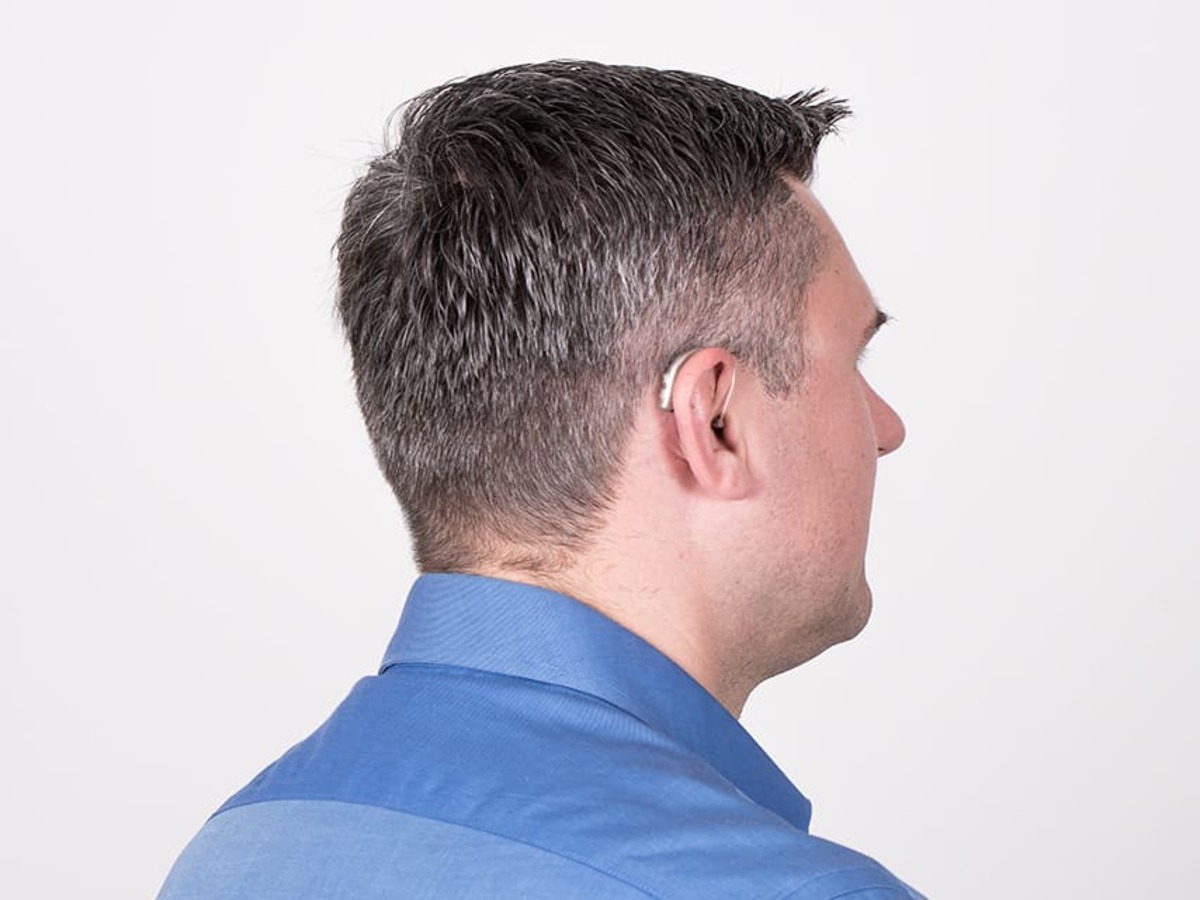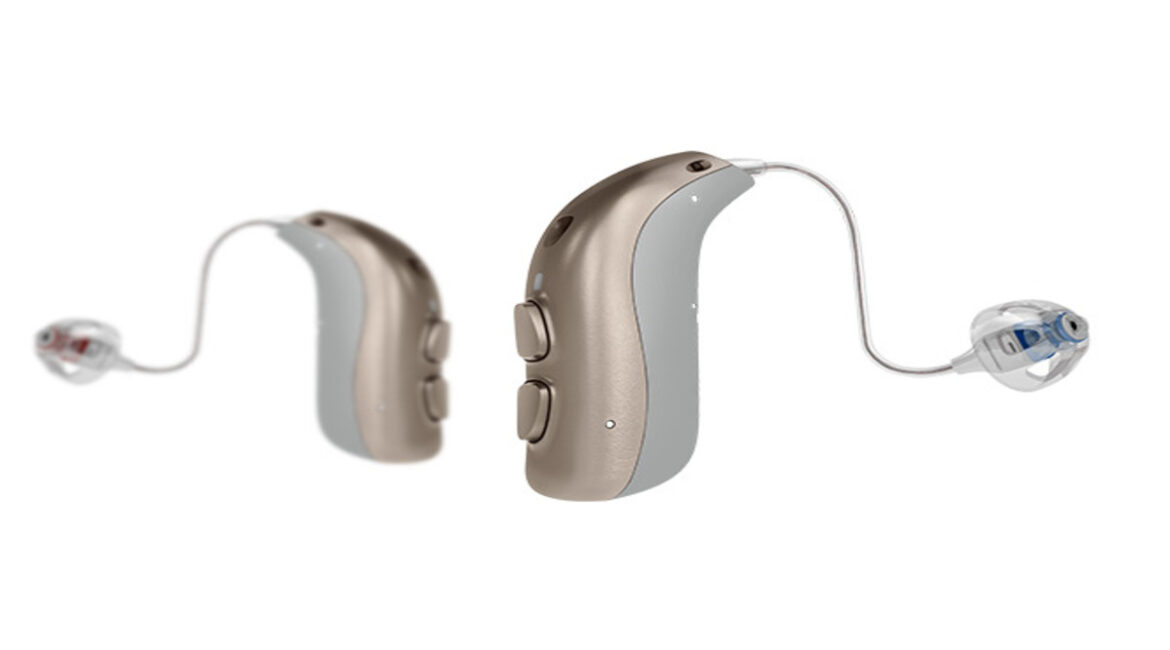Image via bernafon.com
Unlike hearing aids with traditional disposable batteries, rechargeable hearing aids enable you to continue living an active lifestyle without worrying about the battery running out since charging is quick and dependable.
When not in use, at night, or during the day, rechargeable hearing aids may be put into a charging device. Because the hearing aid’s battery is integrated into the device, you won’t need to worry about your hearing aid run out of power or deal with the annoying inconvenience of changing it.
Read more: Hearing Aid Batteries
How Rechargeable Hearing Aids Work

Image via bernafon.com
Typically, chargers for rechargeable hearing aids come in hard-cased, easily-openable forms that you can store in a backpack or set down on a table. The charging bays for the receivers and hearing aids are located within the hearing aid chargers.
To help you identify which hearing aid to put in which charging port, left and right is frequently indicated by colour, with red denoting the right and blue the left. LED lights to display the power status of the charger and your hearing aids at several locations on the charging case.
You can see with a quick glimpse if you need a little more time or are entirely charged. A charging cable is included with hearing aid chargers; one end inserts into the charging case’s rear, and the other plugs into an electrical outlet.
Don’t mix and match other cords at home; only use the cable with your hearing aid charger.
Pros of Rechargeable Hearing Aids
Rechargeable hearing aids offer several advantages over traditional batteries. Here are some of the most notable pros of rechargeable hearing aids.
Battery Replacement Is Not Necessary
Lithium-ion batteries may power hearing aids for up to five years before needing to be changed. This corresponds, on average, with the useful life of most hearing aids.
Once more, the advancement in rechargeable hearing aid technology can be attributed to modern automobile technology. Lithium-ion rechargeable batteries have the most extended lifespan of all the existing rechargeable technologies.
And since they use lithium-ion technology, you can never overload them!
Great for Those With Limited Hand Dexterity
The shrinking size of hearing aids is excellent for keeping them discrete. Still, it might be difficult for people with limited hand dexterity. It could be challenging to change tiny batteries if you have limited skill or poor vision.
Rechargeable hearing aids solve this issue since all you need to do to have them ready the next day is to leave them in a charger overnight.
Better for the Environment
You wind up putting out dead batteries daily or weekly when you use disposable batteries. Because disposable batteries are no longer recyclable, there is a chance that their interior chemicals might contaminate underground water sources and cause environmental harm.
On the other hand, a lithium-ion battery will operate the hearing aid for its entire lifespan. As a result, a storm will only be utilised once every five years. The producers have a method for adequately discarding them.
Establish a More Relaxed Bedtime Routine
It’s simpler to remember to drop the hearing aids into the charger than to open the battery door, which is the typical method for turning off most hearing aids powered by disposable batteries.
Nobody wants a disposable hearing aid to die because they forgot to unlock the battery door! Additionally, a disposable battery might run out before the weekend when you least expect it. Not a rechargeable battery.
Batteries Are No Longer an Expense
Using disposable hearing aid batteries increases the expense throughout your hearing aid’s use. These additional, recurring costs do not apply to rechargeable hearing aids. Rechargeable hearing aids may cost a little more up front than their disposable battery counterparts, but overall ownership costs should be lower.
Cons of Rechargeable Hearing Aids
Let’s take a look at some of the key cons of using rechargeable hearing aids. Keep in mind that everyone’s situation is different, so make sure to consult with your audiologist before making a decision.
An Issue Arises if Your Charger Breaks
Unless you purchase an additional charger, you might be unable to use your hearing aids. At the same time, the charging station or cable is being fixed or replaced. Don’t forget to pack a charger when you go on a trip. Bring a wall adapter if you are travelling abroad.
Additionally, most hearing aid charger cords terminate in a standard USB connection that may be connected to a power source like a computer. As you would with a loaner hearing aid, ask your audiologist if they have an extra charger!
Limited Styles to Choose From
Rechargeable hearing aids’ second generation is still a recent development. Manufacturers are only starting to offer the entire range of sorts and fashions. There may not be as many designs and varieties available right now.
Rechargeable Hearing Aids Could Have a Greater Initial Cost
The initial purchase price may be about 5% more than its disposable version because you are purchasing a charging device and a more advanced battery at this time.
The good news is that the rechargeable battery and charger are covered by the new aid warranty, which usually lasts for three years for high-quality gadgets. The cost of replacing a Li-ion battery outside its warranty period will be higher than that of a disposable battery.
Tips for Using Rechargeable Hearing Aids to Prolong the Battery Life

Image via bernafon.com
Your hearing aid’s battery life extension is more of a habit than a gimmick. Suppose you can develop the following practices and incorporate them into your daily routine. In that case, you will save significant money over several months or years.
Tip #1: Ideal Storing Conditions and Environment
Any battery’s life may be significantly increased or decreased by the surroundings. It’s crucial to keep hearing aids dry and away from corrosion when storing them.
When you are not wearing your hearing aids, they should not be kept in a wet location. Room temperature is the ideal setting. The perfect place is on your nightstand.
Tip #2: Use a Hearing Aid Dehumidifier
A dehumidifier for hearing aids is a tool that removes all the extra moisture from your hearing aids in extending their lifespan. Put your hearing aids in a dehumidifier after you take them off for the evening and go to bed.
Best Rechargeable Hearing Aids in Singapore
Always see our hearing care professional at J Glasses & Hearing if you have any concerns or questions about your rechargeable hearing aids. We aim to raise public knowledge of hearing aids in Singapore while maintaining affordable pricing.
Contact us to take a hearing test and get your rechargeable hearing aids today.

